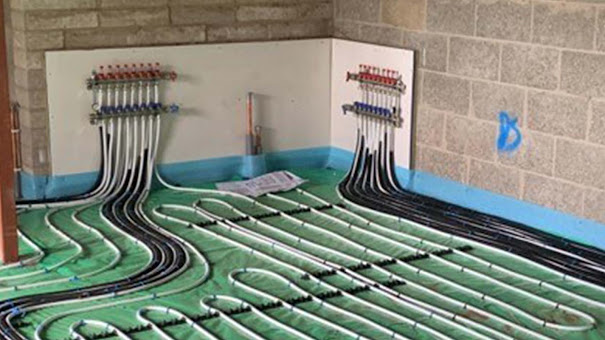Sustainable Building Practices: The Role of Underfloor Heating in Green Construction
As the world embraces sustainable living, the construction industry is evolving to incorporate environmentally friendly practices. One such practice gaining popularity is underfloor heating, which not only provides comfort and efficiency but also aligns with green construction principles. In this article, we will explore the role of underfloor heating in sustainable building practices and how it can contribute to a greener and more energy-efficient future.
more energy-efficient future.
Underfloor Heating and Sustainability:
Energy Efficiency: Underfloor heating systems are renowned for their energy efficiency. Unlike traditional heating methods that rely on radiators or forced air, underfloor heating distributes warmth evenly across the entire floor area. This radiant heating technique requires lower operating temperatures, resulting in reduced energy consumption. By minimizing energy usage, underfloor heating helps lower carbon emissions and contributes to a more sustainable built environment.
Renewable Energy Integration: Underfloor heating systems are compatible with various renewable energy sources, such as heat pumps and solar thermal systems. These renewable technologies can provide the heat energy required for underfloor heating, further reducing reliance on fossil fuels. By harnessing renewable energy, underfloor heating significantly lowers the carbon footprint of a building and promotes a greener approach to heating.
Liquid Screed for Underfloor Heating:
To optimize the performance of underfloor heating systems, it is essential to select an appropriate floor screed. Liquid screed is a popular choice for underfloor heating installations due to its numerous benefits:
Thermal Conductivity: Liquid screed is an excellent conductor of heat and can efficiently transfer warmth from the underfloor heating pipes to the surface. This characteristic ensures that the heat generated by the system is effectively distributed throughout the room, maximizing energy efficiency and comfort.
Rapid Installation: Liquid screed offers a significant advantage over traditional sand and cement screed in terms of installation speed. It can be quickly poured and self-levels, resulting in a smooth and even surface. Additionally, liquid screed dries rapidly, typically within 24-48 hours, allowing for faster project completion and reduced construction time.
Choosing Experienced Floor Screeders:
To ensure a successful and sustainable underfloor heating installation, it is crucial to work with experienced professionals. When searching for floor screeders near you, consider companies like Co-Dunkall Ltd who specialize in underfloor heating and liquid screed applications. These experienced contractors have the expertise to seamlessly integrate underfloor heating systems into your construction project, ensuring optimal performance and energy efficiency.
Conclusion:
Underfloor heating plays a vital role in sustainable building practices, delivering both comfort and environmental benefits. By incorporating underfloor heating systems with the appropriate floor screed, such as liquid screed, buildings can achieve high energy efficiency, reduce carbon emissions, and promote a greener way of living. When embarking on an underfloor heating project, it is essential to partner with reputable floor screeders like Co-Dunkall Ltd, who possess the necessary expertise in underfloor heating and liquid screed installations. Together, we can embrace sustainable construction practices and create a more energy-efficient future.
Visit us for more information :-

Comments
Post a Comment